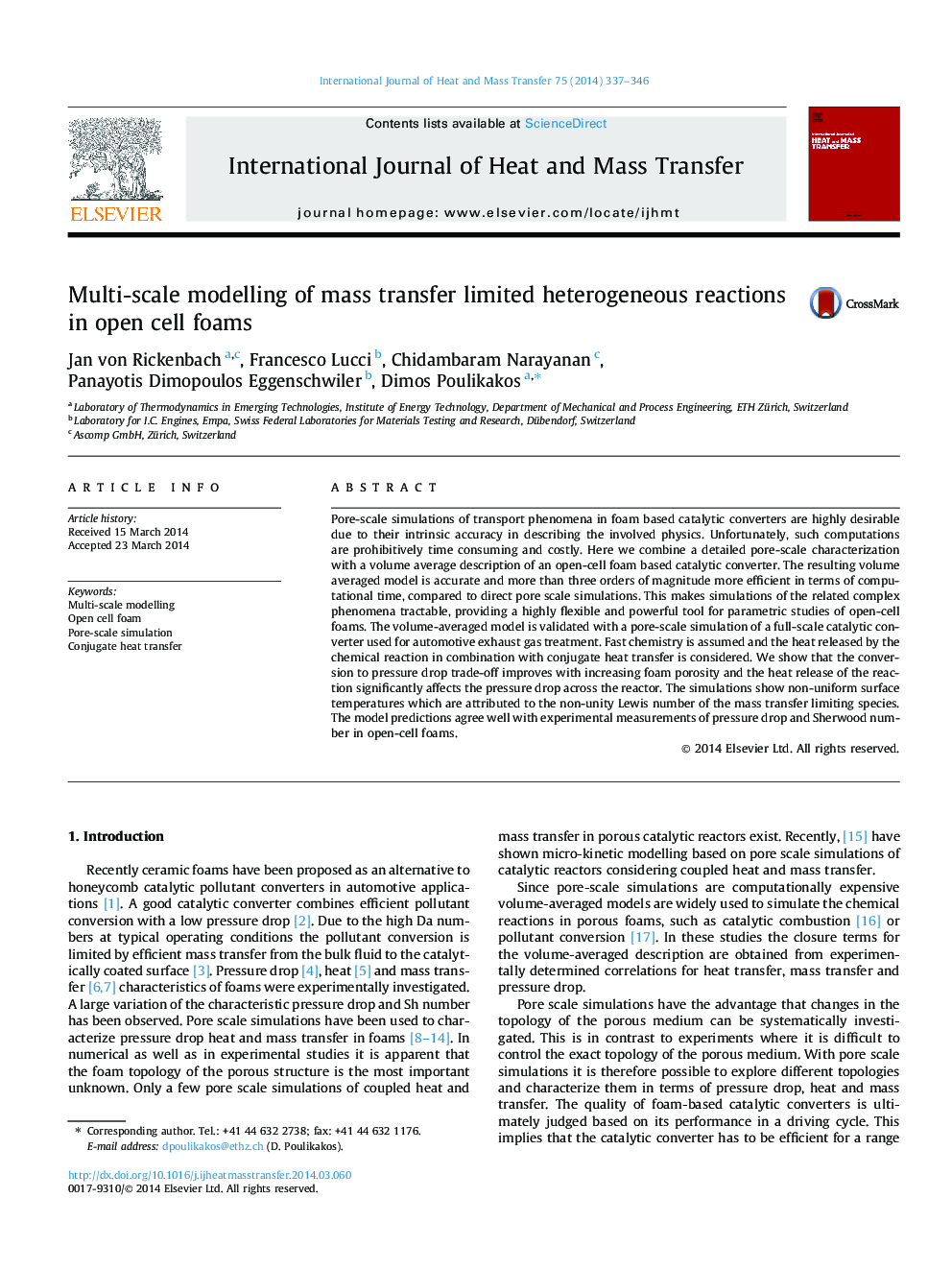| Article ID | Journal | Published Year | Pages | File Type |
|---|---|---|---|---|
| 7056973 | International Journal of Heat and Mass Transfer | 2014 | 10 Pages |
Abstract
Pore-scale simulations of transport phenomena in foam based catalytic converters are highly desirable due to their intrinsic accuracy in describing the involved physics. Unfortunately, such computations are prohibitively time consuming and costly. Here we combine a detailed pore-scale characterization with a volume average description of an open-cell foam based catalytic converter. The resulting volume averaged model is accurate and more than three orders of magnitude more efficient in terms of computational time, compared to direct pore scale simulations. This makes simulations of the related complex phenomena tractable, providing a highly flexible and powerful tool for parametric studies of open-cell foams. The volume-averaged model is validated with a pore-scale simulation of a full-scale catalytic converter used for automotive exhaust gas treatment. Fast chemistry is assumed and the heat released by the chemical reaction in combination with conjugate heat transfer is considered. We show that the conversion to pressure drop trade-off improves with increasing foam porosity and the heat release of the reaction significantly affects the pressure drop across the reactor. The simulations show non-uniform surface temperatures which are attributed to the non-unity Lewis number of the mass transfer limiting species. The model predictions agree well with experimental measurements of pressure drop and Sherwood number in open-cell foams.
Related Topics
Physical Sciences and Engineering
Chemical Engineering
Fluid Flow and Transfer Processes
Authors
Jan von Rickenbach, Francesco Lucci, Chidambaram Narayanan, Panayotis Dimopoulos Eggenschwiler, Dimos Poulikakos,
